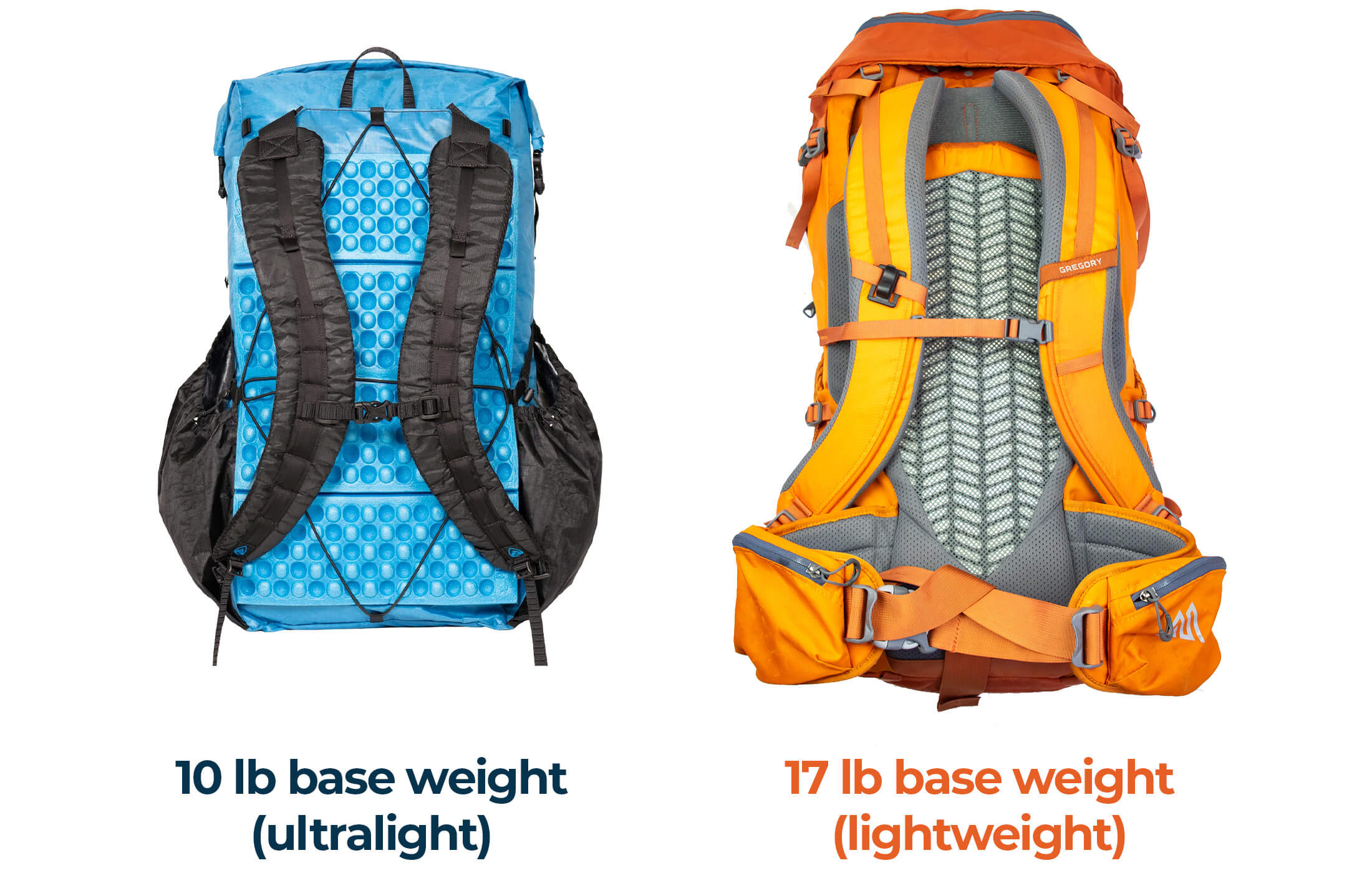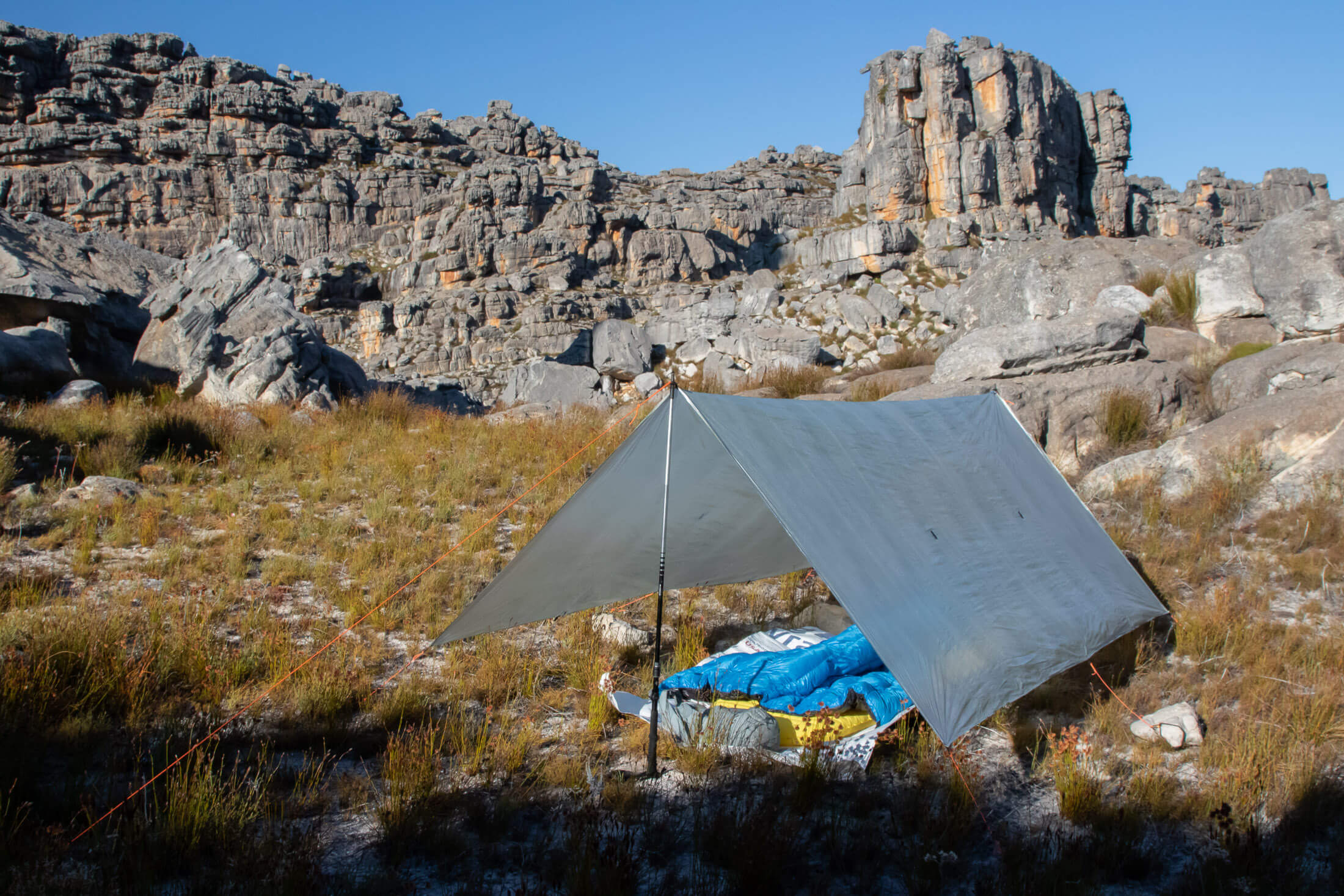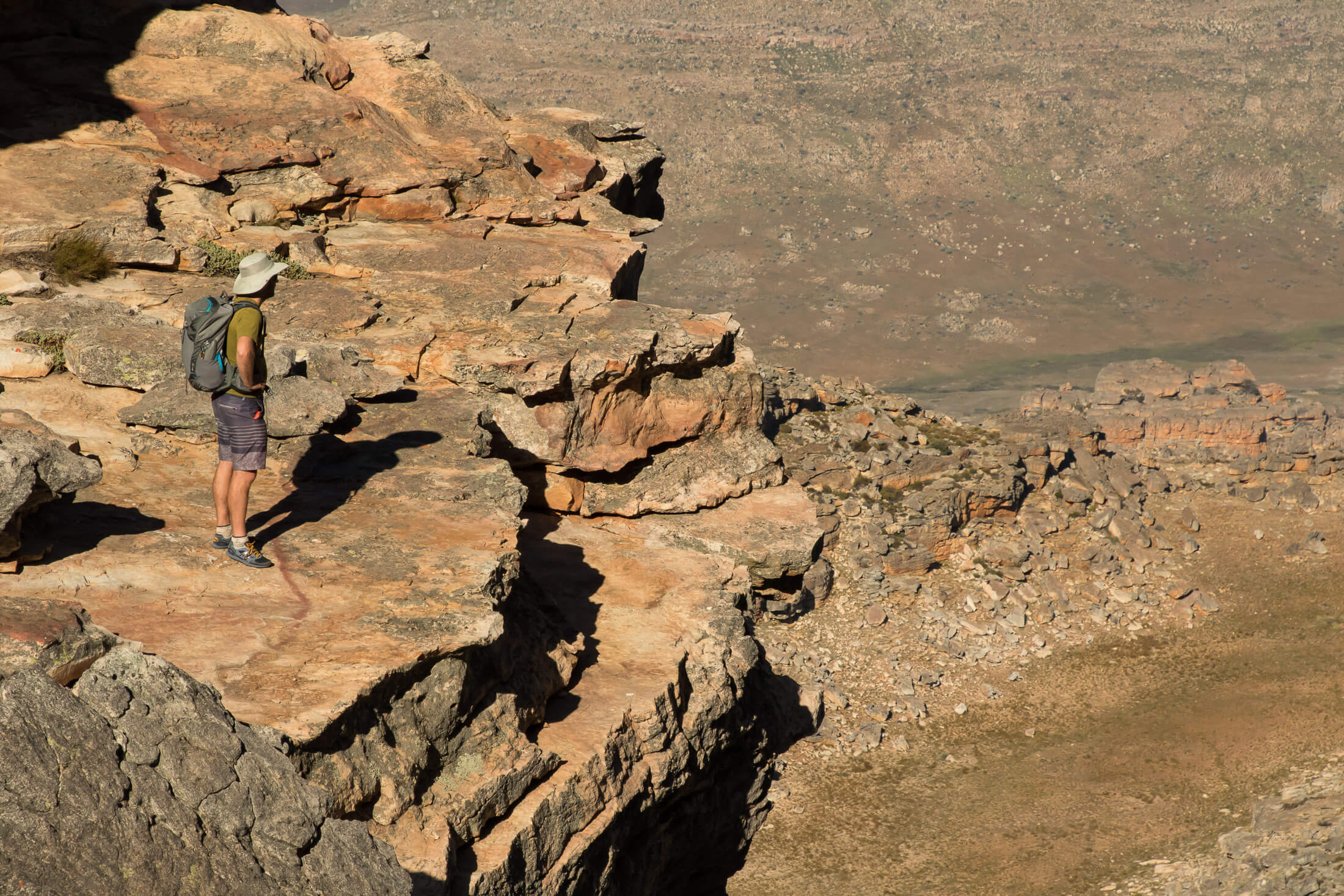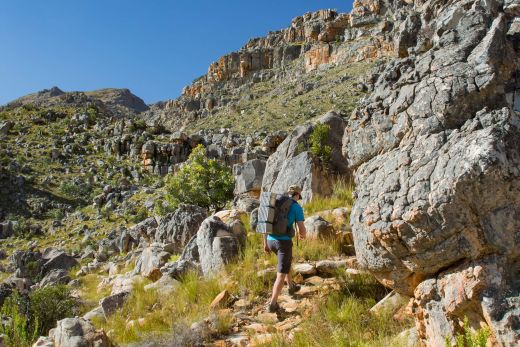If you have ever had an ultralight backpacker pass you – whistling and skipping – while you lug your 30-pound pack up yet another backbreaking hill, you might have found yourself wondering if the light and fast approach really was the way to go or if a light pack was worth the risk of cold and uncomfortable nights. But assumptions are dangerous, and that’s why you’re digging a little deeper and trying to find out if the pros to ultralight backpacking outweigh the cons. In this article, you will learn what you have to gain by reducing the weight of your pack, what challenges you can expect to face when paring down your kit, and what to consider before taking an ultralight approach to your next backing trip.
How light is ‘ultralight’?
First, let's be clear about what ultralight backpacking is and isn’t. The term ‘ultralight’ gets thrown around a lot, and I’ve even heard backpackers with 65-liter packs – tripods and stuffed toys strapped to the outside – claim that they were going ultralight.
Ultralight base weight = 10 lbs
Lightweight base weight = 17 lbs
Traditional base weight = 25 lbs
Base weight = weight of kit only (excludes food, water, supplies)
Up until about 20 years ago, the norm was for backpackers to carry packs weighing between 25 and 30 pounds. Then, gear started to get lighter as did the average backpacker’s base weight. Even new backpackers could get their kit under 25 pounds while more experienced backpackers could get their base weight down to around 17 pounds. This trend towards lighter kit continued for the next few decades, as did the practice of trying to get away with as little as possible. Eventually some extremists were limiting their kits to just 10 pounds – the target base weight for ultralight backpackers.
You don’t have to take things to the extreme
It’s important to understand that putting together a 10-pound kit for anything but the most favorable conditions (warm temps with little chance of heavy rain) is a bit of a challenge. Experienced ultralight backpackers usually experiment and tinker with their setups over several seasons while slowly reducing the weight and bulk of their kit. If you are just starting out and can’t rely on such experience, it will probably make more sense to take a light rather than ultralight approach to backpacking.

For example, you can start by upgrading some key pieces of gear, like your tent and sleeping bag, and then still carry a second sleeping pad or a few extra layers if you are concerned about not being warm enough. With this approach, you might not achieve a target base weight of 10 pounds, but your pack will still be sufficiently light, and you can be sure that you will be warm and comfortable. With experience you can slim down your sleep system or clothing to make your kit truly ultralight, but you might also find that you are happy with a 14 lb base weight and prefer to pack a few little luxuries.
Pros of ultralight backpacking
Beyond the most obvious benefit – that a light pack is more comfortable and less tiring than a heavier one – there are some lesser known but equally significant benefits to ultralight backpacking.
Bigger daily distances
Because it takes less energy to carry a lighter pack, you can go further every day if larger distances are your goal. This can be beneficial especially if the distances between resupply points are large or if your aim is to carry less food and supplies between resupply points. Fewer days on the trail between resupplies ultimately means you have to carry less food, fuel, ect. Also, some backpackers just want to go farther and see more.
Less wear and tear on the body means fewer injuries
A lighter pack puts less strain on the body, which over time can mean fewer injuries. This is especially true of injuries relating to your back, knees and feet. As a rule of thumb, your pack should weigh no more than 20 percent of your body weight. For a 150-pound person, that means carrying a pack no heavier than 30 pounds. The further you can get your pack under this upper limit, the easier it will be on your joints and muscles.
A more concentrated center of gravity makes you more stabile and agile
Heavy packs are cumbersome. With a lighter pack, you will feel more balanced and agile, which will make it easier to cross rivers, climb over downed trees, and scramble up steep terrain. Of course, how you pack your backpack also makes a difference to how easy it is to carry, and you will want to make sure that most of the weight in your pack is concentrated near the small of your back. My article on how to pack a backpack goes into this in greater detail.
With a lighter pack, you can wear lighter footwear
Boots are a sensible choice if you're carrying a heavy pack and you need the support underfoot (the benefits of ankle support are overrated), but with a lighter pack, you just don’t need that level of support. Ultralight backpackers and even those carrying packs up to 25 pounds are better served by trail shoes (either runners or hiking shoes) which are lighter, more comfortable, and faster draining.
Ultralight gear can actually be more durable
It has been said that because it is lighter, ultralight gear is less durable than heavier alternatives. Not true. While some ultralight gear like ultralight quilts and sleeping bags require more care, ultralight packs, tarps and tents made from DCF are actually more durable than regular gear. ultralight air pads too, aren’t any less durable than heavier and less expensive options, with the exception of maybe the very lightest pads.

Cons of ultralight backpacking
As with most approaches to gear selection, ultralight backpacking is not without its downsides. These are the two most significant detractions.
Ultralight gear is expensive
Backpacking gear can be expensive. For example, a down sleeping will cost you between $250 and $400 while an ultralight tent will cost somewhere around $500. If you decided to upgrade these and your pack at the same time, you could easily spend over $1300. Of course, you don’t need to replace all these items in one go. You could get a new sleeping bag first, then a tent, and finally the pack – by then the first two upgrades will have reduced the bulk of your kit, meaning that your kit will fit into a smaller, lighter pack. When you fork out for these big ticket items, it also helps to factor in durability and functionality. A down sleeping bag can last twice as long as a synthetic bag if properly looked after, and many ultralight tents can be set up as single-wall shelters using just the footprint and fly.
An ultralight approach requires experience
There’s a narrower margin for error when you pack only the bare essentials, and it takes experience to select kit that will ensure your safety and relative comfort under certain conditions. Experienced backpackers finetune their kits over several seasons, making substitutes and leaving out unused items as they learn what they do and don’t need. If you are new to backpacking, you won’t have that experience to draw on. That’s why I say that initially it might be wiser to aim for a light but not ultralight pack. That way, you can carry a second sleeping pad or extra layer and avoid the possibility of a cold and unpleasant experience – the likely result of being underprepared.
Factors to consider before deciding to go ultralight
Before compiling a kit list for any backpacking trip, consider the following factors.
Current kit and budget
Typically, the lighter you want to get your kit, the more you’re going to have to spend. But you also might not have to reduce the weight of your kit by much to achieve your target base weight. If you are fortunate enough to already have a down sleeping bag and a relatively light pad, you might only need to replace your tent and backpack to make a 10-pound base weight possible. If, on the other hand, you still have a synthetic bag and an older self-inflating pad, you will have to fork out over $1000 to replace everything or choose to replace your kit piece-by-piece.
Solo or in a group
If you have a friend or partner who is willing to share their tent with you, it can save you from having to buy your own ultralight tent and will shave a pound off your base weight. Other items that can be shared with hiking buddies – and lower your base weight – include a pot and stove (if these are separate), a trowel, and a water filter (more practical if it’s not attached to the bottle or reservoir that you are going to drink from). When hiking with a group, just bear in mind that their approach should guide yours. There’s little point to taking a fast and light approach if the aim is to cover only nine miles a day. In such circumstances, it might make more sense to pack a few little luxuries while still avoiding any unnecessary weight.
Weather conditions
Your aim to go fast and light should never compromise your safety. Exposure is a real danger, and you must always ensure that you have adequate protection and insulation. Again, this means knowing what gear you need in different conditions and then adapting your kit according to those conditions. Keep an eye on the forecast in the week before a trip but then only make your final gear decisions in the three days before a trip – when the forecast is more accurate. If the need for extra cold weather gear pushes your base weight over 10 pounds, so be it. Rather carry a few extra pounds than freeze at night.

Get more advice from this gearhead
You now know all there is to know about the pros and cons of ultralight backpacking. Hopefully all this information will help you decide whether the fast and light approach is right for you. If you do decide to give it a shot, know that you can find many more articles on ultralight backpacking right here on Trail & Crag. From ultralight gear selection to tips and tricks for lightening your pack, I give you everything you need to know to get you started.
